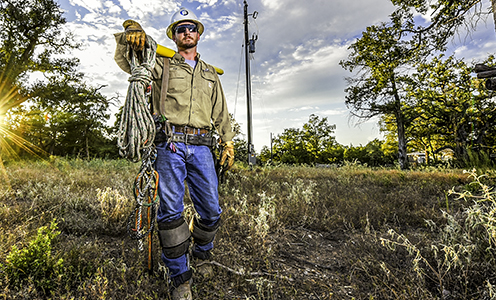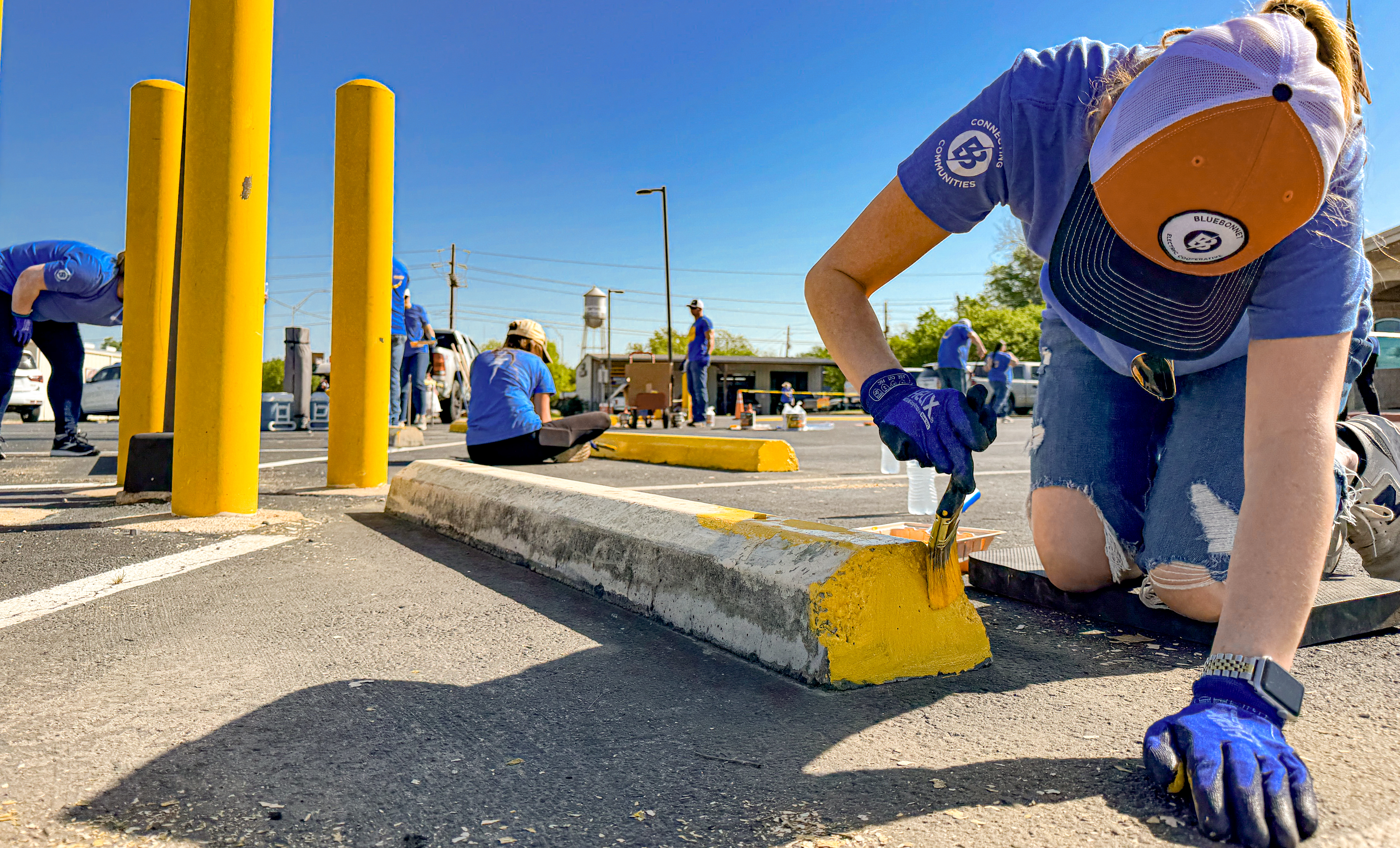Voices of Veterans
Recent news
History is alive and essential to Bluebonnet-area towns. That’s why examples still stand, from busy Main Streets to quiet back roads.
Stories by Addie Broyles,
Sarah Beckham and Sara Abrego
Long before cars or electricity, resilient men and women built lives in Central Texas.
Immigrants and settlers were determined to make this rugged land their home. Many towns were settled more than 200 years ago — some through forceful means — in the vast 3,800-square-mile area currently powered by Bluebonnet Electric Cooperative.
Crops and cattle transformed Caldwell, Brenham, Lockhart, Elgin and other communities into bustling centers of commerce by the early 1900s.
Century-old photos reveal many buildings erected then still stand today. Horse-drawn wagons filled dusty Main Streets, new merchants opened their doors, and businesses built from local brick and stone rose in downtowns.
Comparing those images with photos from today, you can see what has changed and what remains. Generations of families in our communities understood the importance of their past, and residents today continue to preserve these pieces of their history.
Bluebonnet, a relative newcomer to the region, was founded in 1939. As the cooperative marks its 85th anniversary, we honor our communities’ pasts and look forward to a shared future.
Woodson Lumber, Caldwell
For Jim and Harrie Woodson, creating a family business was a winding — and muddy — journey.
After their mother died in 1912, the brothers left Missouri for Southern California. They found jobs at a lumberyard there, working themselves “black and blue,” Harrie later wrote.
But their toil paid off. With the money they saved, the brothers moved to Caldwell in Burleson County and bought their own business, which became Woodson Lumber Co. in 1916. Back then, the town’s streets were unpaved, and mule teams trudged through deep mud to pull the Woodsons’ delivery wagons.
Sometimes it took a team of oxen to haul a load of feed across the street, Harrie wrote later. From the original Caldwell location, the business grew to add six other stores around Texas, selling lumber, hardware, building materials, farm and ranch supplies, lawn and garden products, and other goods.
The Caldwell branch has been renovated and expanded over the years, but some lumber bins there date to before 1916. Four generations — 12 Woodson descendants and spouses — have worked, or still work, for the family business. Ann Woodson Yager Chapman, Harrie’s granddaughter, succeeded her father, Tom Yager, as CEO in 1998.
She credits their longevity to close partnerships with all members of their communities, from local governments to churches, schools and generations of customers. “We played — and continue to play — a role in building the great state of Texas, from the days of horse-drawn wagons to 18-wheelers,” Chapman said. “That’s an honor for us.”
— Sarah Beckham
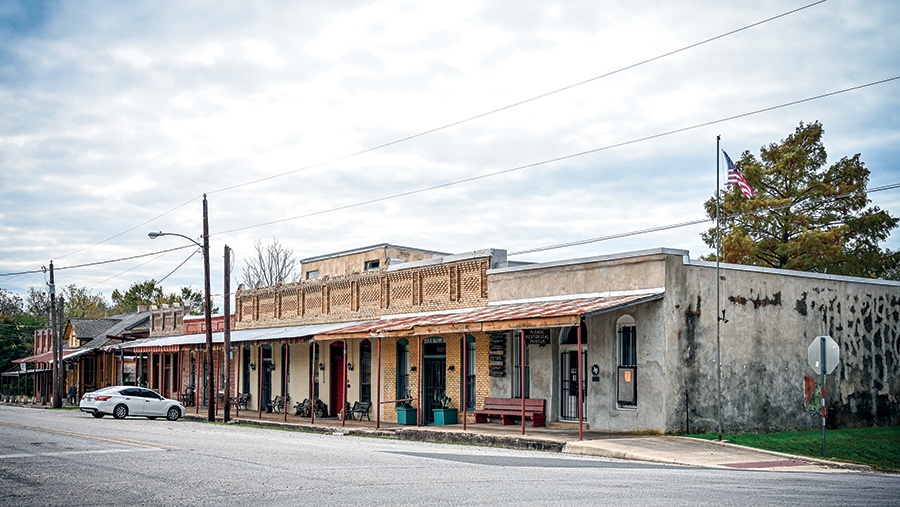
Old Rock Front Saloon, McDade
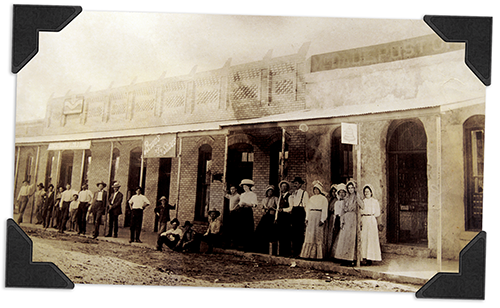
The Old Rock Front Saloon is the oldest building in McDade, a small community incorporated in 1870 southeast of Elgin.
The saloon was built in 1874 by John Dempsey Nash, a veteran of the Battle of San Jacinto nearly 40 years earlier. At the intersection of Old Highway 20 and Waco Street, the saloon was preceded by two wooden saloons, both of which burned down.
The origin of the large stones that gave the original saloon building its name still baffle local historians. The railroad, completed in 1869, brought people and supplies to what was — and still is — a quiet community. But the Old Rock Front Saloon was home to occasional mayhem in the early years, the site of revenge shootings and deaths.
The most notorious, in 1883, is known by many as the Christmas Day Shoot-Out and was such a dust-up that the local historical society has been re-enacting it each December in recent years.
The saloon closed in 1903, and from 1908 to 1933 the building was the local post office. Other early buildings sprung up along that stretch of road. Between the 1930s and the 1960s, the old saloon housed various grocery stores and cafes, and since the mid-1960s, it has been home to the McDade Historical Museum.
Now the saloon houses artifacts from the days when the community was a busy trading center in Bastrop County. The museum hosts chili suppers and educational events to keep the area’s storied past alive.
— Addie Broyles
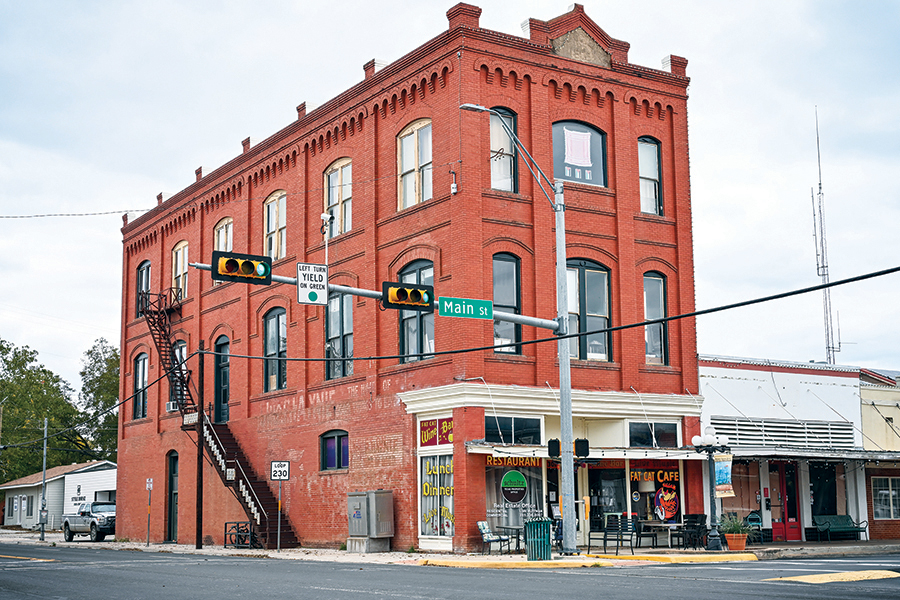
Old Masonic Lodge, Smithville
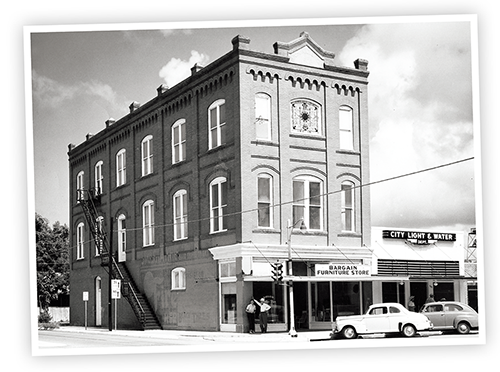
Smithville’s first buildings popped up in the 1870s, but when the railroad arrived in 1887, the burgeoning downtown moved nearer to the busy rail line and new depot.
In 1903, the W.J. Nixon Order of the Masonic fraternal organization built a narrow, three-story building with an extended brick parapet at 301 Main St. The Masonic lodge was the tallest building in Bastrop County for many years.
The Masons leased out the first two floors, and met on the top floor until the 1970s, when they moved to a building on Wilkes Street. Many different businesses occupied the bottom floors of the original lodge over the years, including Hainey’s Grocery, which sold dry goods to area residents until 1930.
It was also the site of an auto supply store and a furniture showroom with a radio repair shop in one corner. Most recently, the Fat Cat Lounge and Cafe, a restaurant and live music venue, has made the building its home.
The upper floors have been converted to loft apartments. Located across the street from the Texas Theater, which was built in 1904, the Masonic Temple is one of about 30 historic buildings still standing in downtown Smithville.
— Addie Broyles
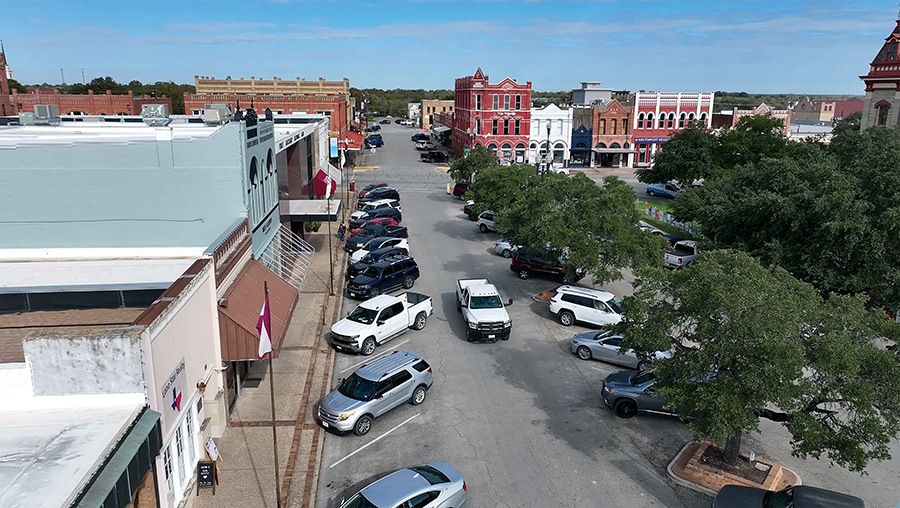
Downtown Square, Lockhart
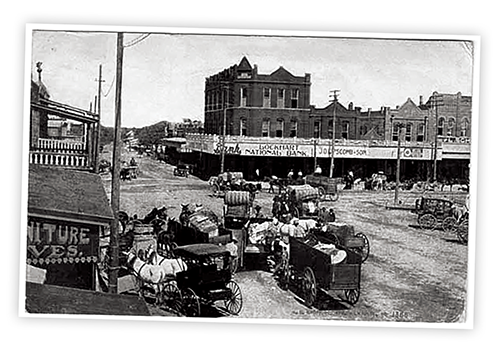
Lockhart’s historic downtown is evolving once more, with music venues, boutiques, new restaurants, a wine and book shop, and an art gallery.
But the past remains preserved: More than 20 historic buildings still stand around the town square. Just north of the historic courthouse — which was built in 1894 and renovated in 2000 — is a stretch of seven buildings built in the late 1800s and early 1900s.
On one corner, the Brock building, 101 E. San Antonio St., harkens back to a time after the Civil War, when the bustling cattle and cotton town was a launching point for the Chisholm Trail.
Andrew Brock, a local business baron who helped develop Lockhart, built the three-story red brick building in 1898 to house a dry goods store. It’s one of 12 buildings Brock financed that are still occupied today. Another just a few doors down, at 107 E. San Antonio, was originally a saloon and still bears Brock's initials, A.L.B.
Today it is home to a clothing shop, Rollfast Ranchwear. Next door are several still-standing buildings from 1902, including the former site of L. Swartz and Co.’s dry goods store, and a JCPenney store in 1994 that today is home to Southwest Museum of Clocks and Watches.
The discovery of oil ushered in the town’s second boom in the 1920s and the founding of several legendary barbecue stops, launching a dining tradition that’s still hot in Lockhart.
— Addie Broyles
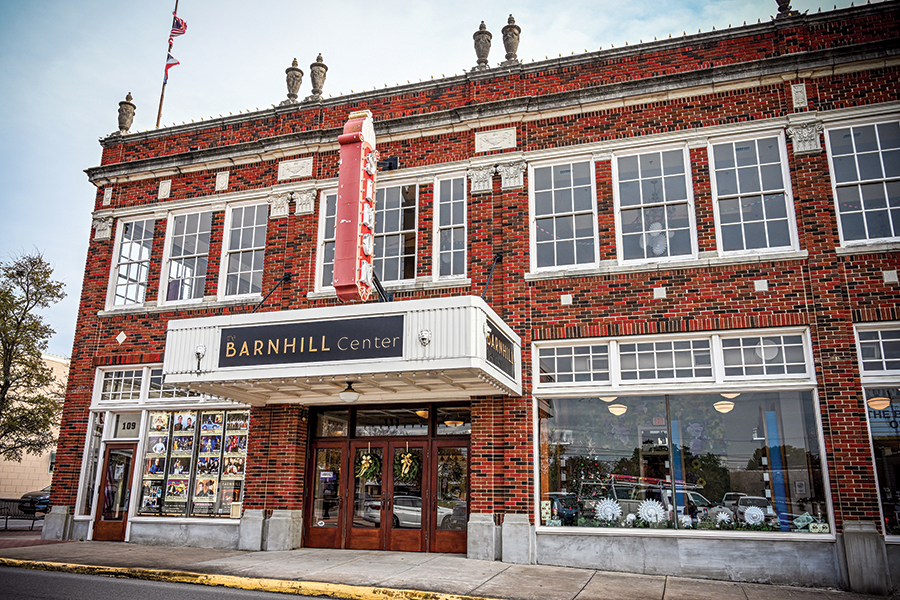
Simon Theatre, Brenham
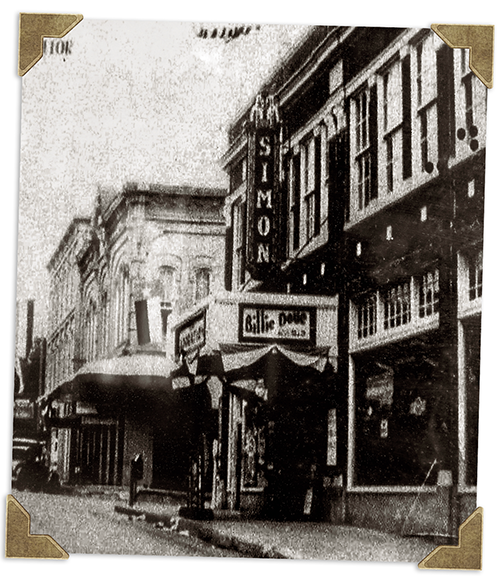
In the 1920s, the James Simon family of Brenham, owners of the local opera house, hired Alfred C. Finn, the architect behind the San Jacinto Monument, to build a Beaux-Arts Classical Revival-style building.
There, they hoped to offer vaudeville performances, silent films, “talkies” and a ballroom for residents of the economic capital of Washington County.
The Simon Theatre, at 111 W. Main St., opened in 1925 and it immediately became something bigger: a cultural center that ushered Brenham into a golden era of entertainment. Sadly, James Simon passed away before the theater was completed.
Later, the theater was sold to the Stuckert family, and multiple generations of that family ran it for almost 50 years. The theater closed in the 1980s.
At one point afterward, it housed a Chinese restaurant. In 2003, the building, in need of repairs, was purchased by Brenham Main Street Historical Preservation Inc., which spent the next 13 years — and more than $1 million — refurbishing it.
In 2016, the theater reopened as the Barnhill Center at Historic Simon Theatre, with a 321-seat auditorium and a renovated lobby.
The bright lights of the original theater’s vertical sign, or blade, still surround the Simon name, and the venue continues to draw crowds for movies, comedy shows, tribute bands and bona fide stars such as Ricky Skaggs.
Inside the lobby, you’ll find the Washington County Visitor Center and, on the second floor, a 220-person ballroom and smaller conference hall are available for rent. Get more information at thebarnhillcenter.com or call 979-337-7240.
— Addie Broyles
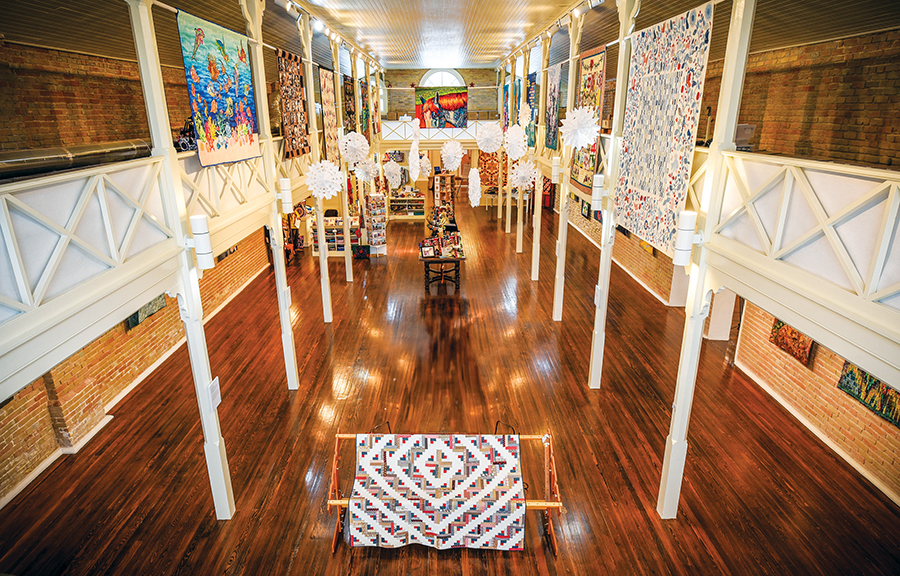
Texas Quilt Museum, La Grange
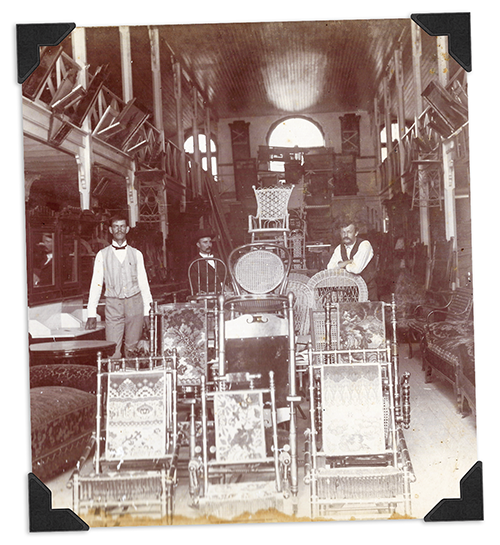
In May 1892, Frank Reichert moved his business into the furniture store he had built at 140 W. Colorado St. in La Grange.
The retail hub thrived, and in 1907 Reichert expanded into the building at 136 W. Colorado. Even though the store suffered a major blow from a devastating 1913 flood, causing $4,000 in damage — about $125,000 in today’s dollars — the buildings survived, and the store bounced back.
In 1922, it became known as Reichert and Kneip and then Kneip Furniture Company from 1941-1974. Other incarnations followed, including Sweitzer Hardware and Furnishings, Sports-n-Stuff, the Dusty Rose antiques store and a J.C. Penney catalog store.
In 2011, the old Reichert store and neighboring building took on new life as the Texas Quilt Museum. Today, the museum attracts visitors from around the world and is home to the largest quilt research library in the southwestern United States.
Guided by the Gensler architecture firm, the careful restoration of the buildings that house the museum has been recognized by Preservation Texas and other groups. Visitors can stroll the 10,000-plus square feet of display space, appreciating both the artistry of the quilts and the restoration of original building features like the hardwood floors.
The museum is open from 10 a.m. to 4 p.m. Thursdays-Saturdays. For more information, visit texasquiltmuseum.org or call 979-968-3104.
— Sarah Beckham
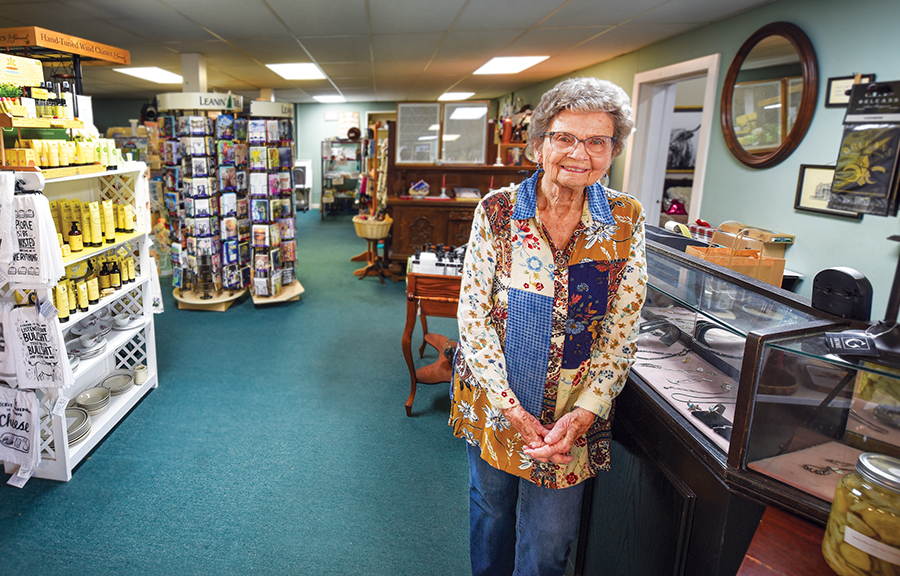
10 a.m. -5 p.m. Wednesday-Saturday.
The General Store, Lexington
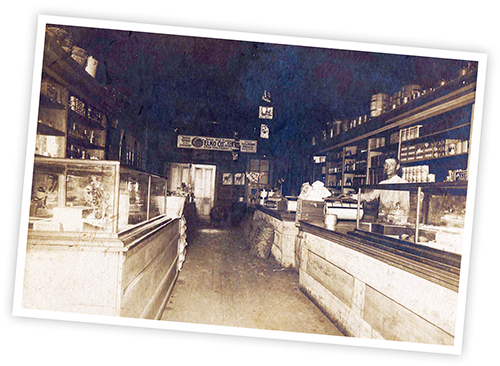
Long ago, Lexington residents in need of goods headed to a general store that became a family-owned legacy for generations.
The Hester Store was founded in 1868 by German immigrant Nicholas Hester. After his death, his widow kept it going, overseeing construction of a new location downtown in 1893.
Across decades, the store in Lee County was run by families connected through marriage: the Hesters, the Dowdys and the Engelharts. Hester son-in-law W. S. Dowdy took over in 1896 and the Dowdys operated it until 1917.
Then Henry Engelhart, a Hester son-in-law, took over, and his family operated it for another 28 years.
The building was torn down in 1967 and its site is now a vacant lot across from the Lexington Log Cabins. A few blocks away, though, Jean Dowdy, 91 — the granddaughter-in-law of W.S. Dowdy and Germania “Monnie” Hester Dowdy — carries on the family’s retail tradition.
Jean retired from her job at a medical office more than 30 years ago but quickly got bored. She bought an old Ford dealership at 608 N. Rockdale St. and christened it “The Dowdy House.”
Today she sells antiques, greeting cards and gift items there. While the original Dowdy family merchants rang up purchases on a big, blocky cash register, Jean scans customers’ credit cards with an iPhone or iPad.
— Sarah Beckham
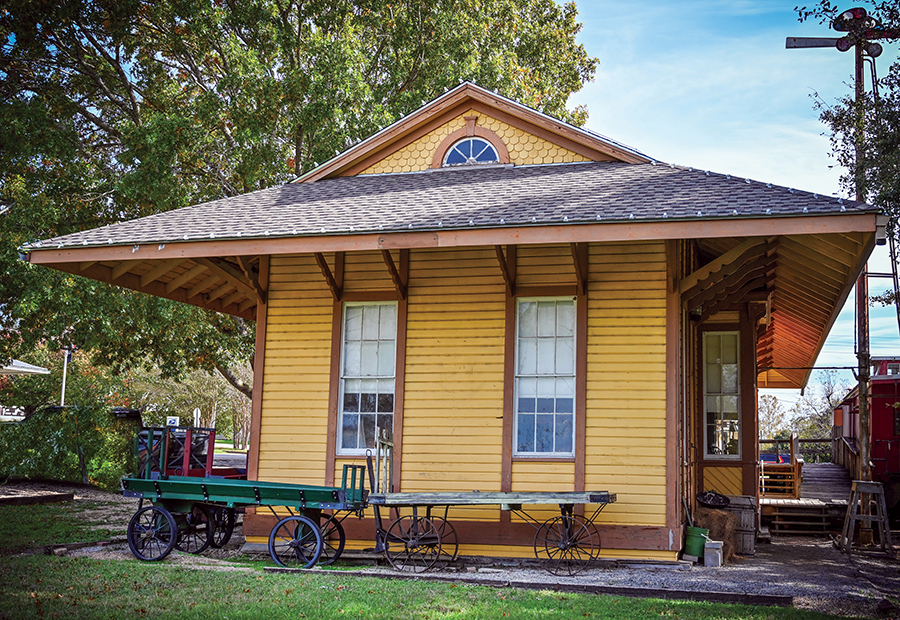
Railroad Depot, Burton
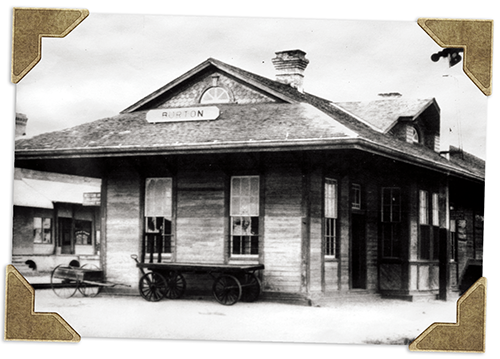
More than 140 years ago, the town of Burton in Washington County was a stop for trains carrying livestock, lumber, cotton and people traveling between Brenham and Austin on the Houston and Texas Central Railroad.
During the depot’s heyday, steam engines pulled trains into Burton four times a day. The original depot burned down in 1898, but was rebuilt and stood witness to passenger train travel until 1951. The last freight train rolled through Burton in 1980.
The old depot building had been moved, but the Burton Heritage Society bought it, moved it back near its original location and restored it in 1990.
Today, the society keeps Burton’s history alive for visitors inside the old depot. Items on display include railroad workers’ tools, an old ticket counter, toys and other pieces of the town’s past. Even signatures scribbled with pieces of coal by long-ago train workers remain on the walls of the old baggage and freight rooms.
The platform where passengers stood more than a century ago, listening for a distant train whistle, can still stoke the imagination.
The depot, which holds state and national historic designations, is 15 miles west of Brenham, at 507 N. Railroad St. It is open to visitors from 10 a.m. to 4 p.m. the first and third Saturdays of the month. Call 979-803-0393 for information.
— Sara Abrego
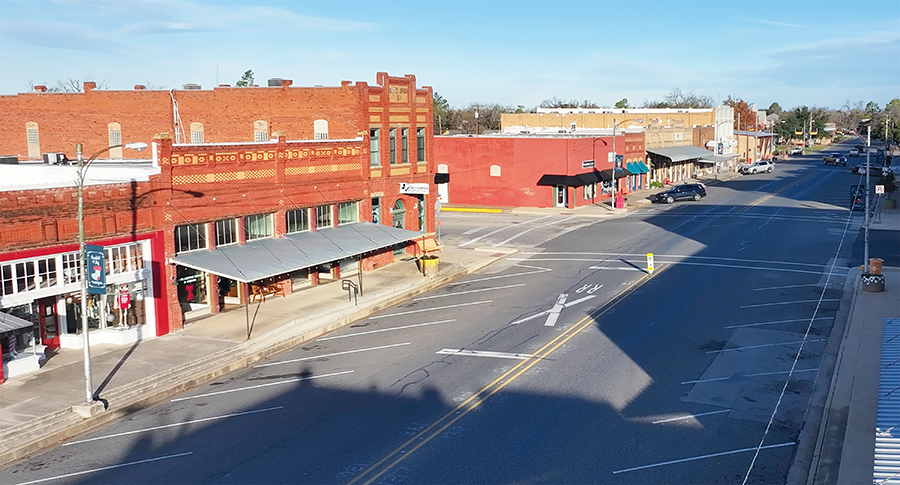
Main Street, Elgin
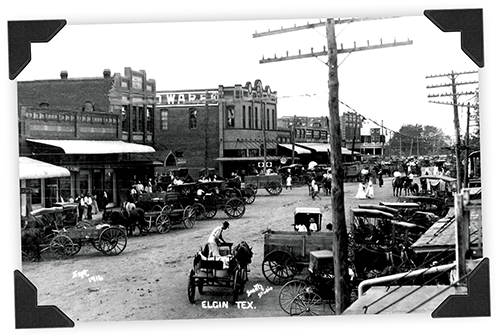
In Elgin’s historic downtown district, you’ll find more than 30 buildings dating back to the late 1800s and early 1900s, nearly all built with the town’s famous bricks.
This stretch of Main Street showcases several of them, including the still-standing Simon and Miller buildings. Simon’s Department Store, at the far left, was built in 1906 at 30 N. Main St.
It sold clothing for many years, and then became a furniture store that was divided into two buildings. Today it houses a bustling coffee shop and dance studio, plus two residences.
The two-story red brick Miller building next door, 34 Main St., was built in 1890 and was one of the town’s first banks. By World War II, it housed a domino hall that became a watering hole for soldiers training at nearby Camp Swift. In the decades after, the building housed the Merchants & Farmers State Bank, a hair salon and a financial advisor’s office.
Today it is home to McCrary Insurance, an independent agent representing Germania and other providers.
In the back, inside a 1910 addition, The Healthy Spot smoothie cafe serves visitors. In the next block, the first building’s second story burned in the 1950s, but the first floor was restored and became home to Upchurch’s Drug Store until the 1990s.
The rest of the block has several buildings circa 1900-1910: Singleton’s Grocery and Frost Barber Shop, Joe Toggery’s Building, and the O’Conner and Bengston buildings. Elgin remains a brick mecca: Three manufacturers still operate there, maintaining the town’s title as “The Brick Capital of the Southwest.”
— Addie Broyles
Two graduates began their co-op careers as interns; four additional staff members receive advanced technical training certifications
By Sidni Carruthers
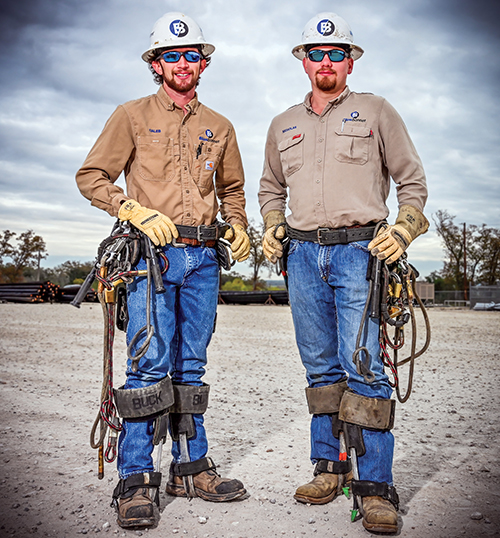
Fifteen apprentice lineworker graduates at Bluebonnet Electric Cooperative are ready to join dozens of other journeyman lineworkers who keep electricity flowing to co-op members across its 3,800-square-mile service area.
Of the 15, two began as lineworker interns at Bluebonnet in 2019, completing a six-month training program before beginning years of apprentice training.
Another four Bluebonnet employees recently completed specialized training programs: one in advanced electric meter work, one in substation operations and two in control center operations.
Each program has different study, testing, training and work requirements. The lineworker apprentice program at Bluebonnet requires 8,000 hours of on-the-job learning, which includes 672 hours of technical instruction — typically a four-year commitment. The recent apprentice graduates have obtained U.S. Department of Labor certification as lineworkers.
“I grew up in the Brenham area with Bluebonnet folks all around. When the apprenticeship opened up and I had an opportunity to work here, I took the chance,” said Brenham-based journeyman Ryan Quinton, one of the 15 graduates. “There is always something to learn out here, but I have a good crew that makes sure we are safe and can serve Bluebonnet’s members.”
He added that the best parts of his job are being able to work outside and do something meaningful.
Many of the apprentice graduates brought knowledge and skills from previous training and other jobs.
“Before coming to work at Bluebonnet, I worked as a heavy-machine operator,” said Matt Mole, now a Bluebonnet journeyman working in Maxwell. “That time taught me the importance of safety, paying attention to what is happening around you and the importance of teamwork. The best part about working at Bluebonnet is the camaraderie that I feel with everyone.”
Including this year’s group, 139 Bluebonnet lineworker apprentices have graduated from the program since it began in 2004.
During their hundreds of hours of classroom instruction and thousands of hours of on-the-job training, apprentices focus on learning how to build overhead and underground power lines, restore power, repair and replace equipment and connect meters.
Garrett Gutierrez, field superintendent in Bastrop, is proud of the program and the quality of service it allows Bluebonnet to provide.
“Most of the guys who go through our program are from around the Bluebonnet service area and are Bluebonnet members, too,” Gutierrez said. “They take pride in their work, and that shows when they are working. It is great to see them be able to work in their communities.”
The most recent Bluebonnet apprentice graduates, in addition to Quinton and Mole, are Nick Baker, Joseph Carrillo, Caleb Clay, James Holder, Casey Jacobs, Matt Jones, Stephen LeFrance, Parker Redwine, Bubba Townsend, Garett Urban, Rhett Vellier, Bryan Woods and John Zamora. Clay and Baker, both from Bastrop, began their Bluebonnet careers as lineworker interns in 2019.
The intern program, which started in 2018, provides six months of technical instruction in line work. To advance into the apprentice program, participants must also obtain a power-pole climbing certification and a commercial driver’s license.
“I was interested in the internship program because I knew Bluebonnet was a great place to work, and there is always a need for lineworkers,” said Baker, who began the program after graduating from Bastrop High School. “Plus I already knew a few guys that were in the apprenticeship program. Having started as an intern and seeing what all it took to be a lineman at Bluebonnet really solidified that this is what I wanted to do.”
The internship program aims to hire candidates who live in the Bluebonnet region.
“We concentrate a lot on safety with these young guys,” said Nick Barta, Bluebonnet safety and training supervisor. “Throughout the cooperative we focus on safety, but it is essential that when the interns start, they understand the importance of safety and how to think about it in all of their work.”

Janca and John Russell.
Four Bluebonnet employees also received certifications for specialized work.
Anthony Garcia, a power quality and metering technician, received training in troubleshooting meter problems and formulas for reading meters. John Russell, a substation technician, completed an apprenticeship to learn skills required to maintain and repair substation equipment. Two control center operators, Bryn Janca and Hunter Adamek, completed a 10-month program and proficiency exam to receive control center operator certifications.
Learn more about Bluebonnet’s intern and apprenticeship programs at the cooperative, at bluebonnet.coop/careers.
Soak up the town’s history, shopping and dining
By Camille Wheeler
From its lone stoplight where U.S. 290 meets FM 1155, Chappell Hill opens like a history book. The two-lane road serves as both Main Street and a stretch of the Texas Independence Trail reaching into the Washington County countryside. On this general path, Stephen F. Austin established his first colony in 1821. A small community with an estimated population of 1,000, Chappell Hill has numerous homes and businesses with national and state historic designations. The unincorporated town traces its beginnings to a time when riverboats on the Brazos River carried cotton to market. In 1838, Tennessee native Robert Wooding Chappell arrived in the area, building a cotton plantation on an original piece of Austin’s colony. Chappell’s granddaughter, Mary Hargrove Haller, bought 100 acres there in 1847, and two years later began selling lots to Chappell Hill’s first residents. Today, the community welcomes thousands of visitors annually for its Bluebonnet and Scarecrow festivals, and Independence Day Parade. With its backdrop of rolling hills and the alluring historic Main Street area, Chappell Hill is a popular weekend getaway. After soaking up the town’s history, shopping and dining, head 20 miles northeast on FM 1155 to the birthplace of the Republic of Texas in Washington.
WHAT TO DO
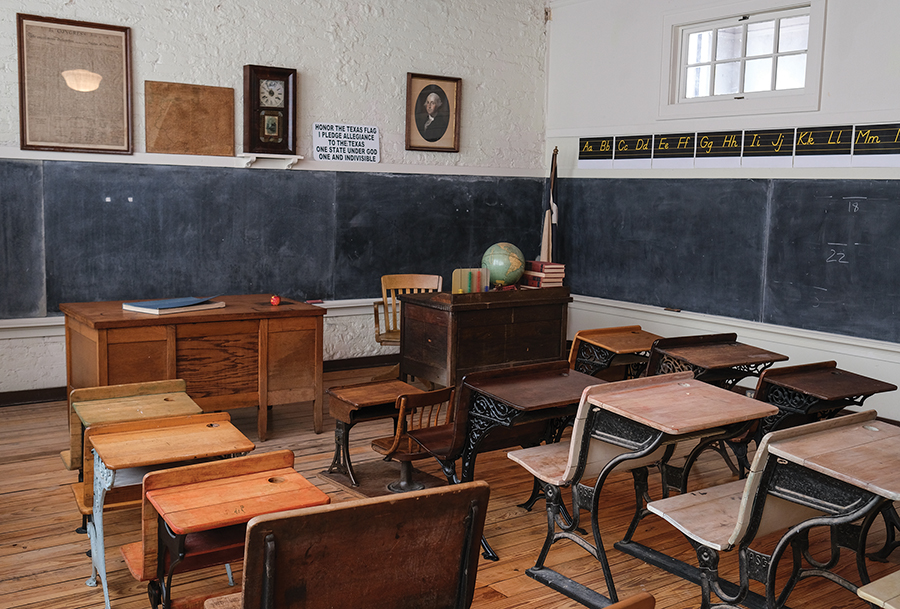
Visit the Chappell Hill Historical Society Museum, 9220 Poplar St., from 10 a.m.-4 p.m. Wednesday-Saturday. Built in 1927 as the Chappell Hill Public School, the building is home to the nation’s largest collection of paintings by renowned Black folk artist Johnnie Swearingen. Call 979-836-6033 to take a society-sponsored tour of the Main Street Historic District — where some restored structures date to the mid-to-late 1800s. Other stops on the tour include historical society-preserved sites Providence Baptist Church, built in 1873; the Circulating Library, with its original book collection dating to the 1850s; and the Rock Store, originally a general store built in 1869 from locally quarried sandstone and hand-hewn timbers. Wall tapestries there depict the town’s history. Another historic stop is Chappell Hill Bank, 5060 Main St., circa 1897; the original teller stations and vault are still in use; 8:30 a.m.-3:30 p.m. Monday-Thursday, 8:30 a.m.-5:30 p.m. Friday, 8:30 a.m.-noon Saturday.
Some renovations are underway at the 293-acre Washington-on-the-Brazos State Historic Site, where 59 delegates signed the Texas Declaration of Independence in 1836. The Star of the Republic Museum and the Visitor Center are scheduled to reopen in 2025, but visitors can stroll the rest of the complex to see how settlers of that era lived. 23400 Park Road 12, Washington. Get more information at www.thc.texas.gov/historic-sites (scroll to the bottom of the page and click on Washington-on-the-Brazos.)
Chappell Hill Lavender Farm, 8 miles north of town, offers events, classes and a gift shop; check chappellhilllavender.com for information, blooming season updates, plant availability and days/hours of operation; 2250 Dillard Road, Brenham; 979-251-8114.
GRAB A BITE
Dining options ranked in Tripadvisor’s top restaurants are:
Bevers Kitchen & Gifts, 5162 Main St., popular for its chicken-fried steak and rich assortment of pies; 10 a.m.-2 p.m. Tuesday-Thursday, 10 a.m.-4 p.m. Friday-Saturday, 10 a.m.-3 p.m. Sunday.
Chappell Hill Bakery & Deli, 8900 U.S. 290 E., has its own butcher shop and serves up barbecue and pastries; 6 a.m.-8 p.m. Sunday-Thursday, 6 a.m.-9 p.m. Friday-Saturday.
Chappell Hill Sausage Company, 4255 Sausage Lane, makes its own smokehouse meats; restaurant open 8 a.m.-4 p.m. Monday-Friday, 8 a.m.-3 p.m. Saturday; retail shop open 8 a.m.-5 p.m. Monday-Friday, 8 a.m.-4 p.m. Saturday.
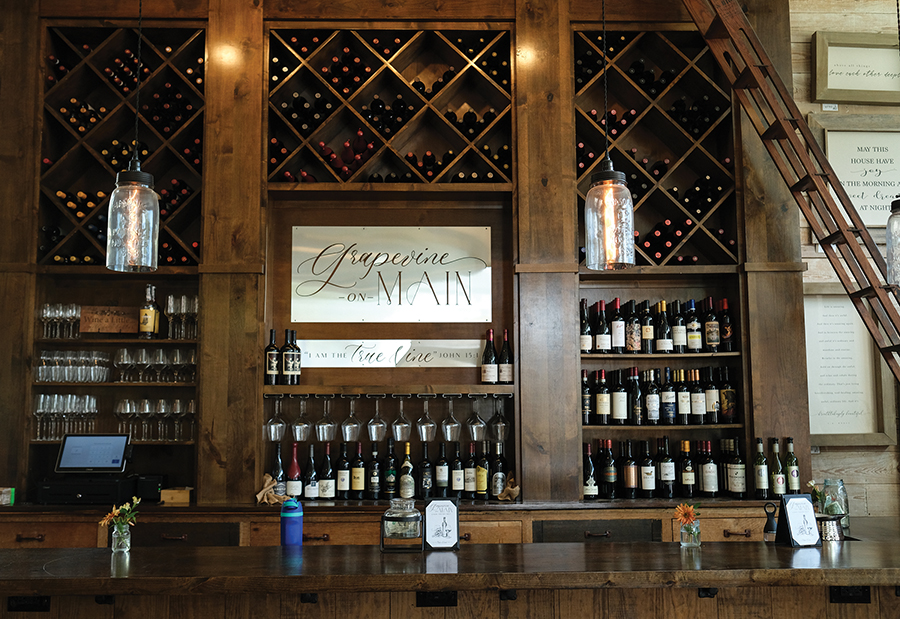
While in town, you can sample the 59 Delegates wine, plus other handcrafted selections, at Texas Star Winery, 10587 Old Chappell Hill Road, 11 a.m.-6 p.m. Friday-Saturday, noon-5 p.m. Sunday. Also get a glass at the Grapevine on Main wine bistro, 5120 Main St., open daily, live music Friday and Saturday evenings; call 979-777-3112 for lunch and dinner hours.
STOP AND SHOP
The Brazos Star, 5101 Main St. Handmade items galore, vintage kitchenware and homemade pickles — ask owner Mary Louise Young about her professional bowling career, too, 10 a.m.-4:30 p.m. Saturday-Sunday.
Bluebonnet House & Garden Center, 5095 Main St. Native and tropical plants, collectibles, locally made gifts and more, 10 a.m.-4 p.m. Wednesday-Sunday.
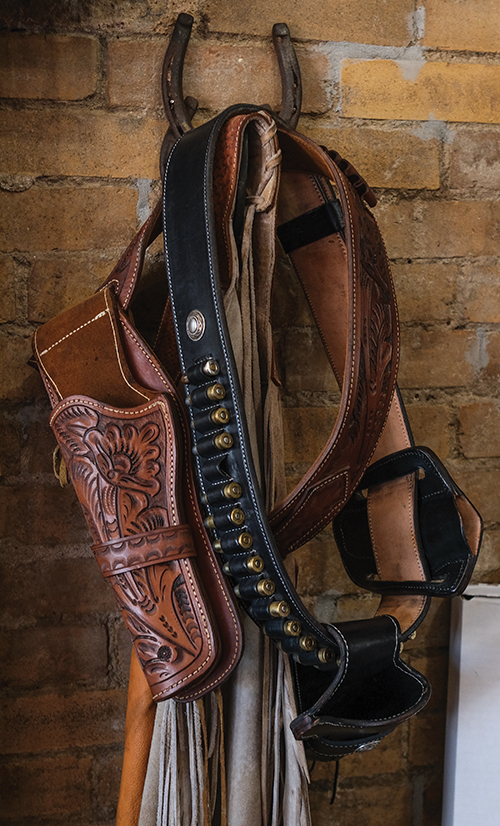
Chupacabra Leather Co., 5088 Main St. Gun holsters, knife scabbards and belts are made in the shop, 1-5 p.m. Tuesday-Friday, 9 a.m.-5 p.m. Saturday, 1-4 p.m. Sunday.
Cotton Pickin's Boutique & Market, 5145 Main St. Women’s linen clothing, home decor, 11 a.m.-5 p.m. Wednesday-Saturday, noon-4 p.m. Sunday.
Other shops worth a stop: Kippers Kountry Store, 5084 Main St., noon-4 p.m. Thursday and Sunday, noon-5 p.m. Friday, 10 a.m.-5 p.m. Saturday, and DLS Interiors, 5075 Main St., 10 a.m.-4 p.m. Wednesday-Saturday.
A TIP FROM LOCALS
Relax with friends at Carol’s Ice House, 5090 Main St., where owner Carol Salah is always behind the bar; noon-10 p.m. Wednesday-Saturday, noon-5 p.m. Sunday.
This is part of an ongoing series featuring communities in the Bluebonnet region.
Bluebonnet Electric Cooperative and LCRA representatives present a $10,000 grant to the Winchester Area Civic Association for improvements to Zilss Memorial Hall. The grant is part of LCRA’s Community Development Partnership Program. Pictured in the front row are, from left, Ellen Brumback, association secretary; Barb Schafer, association member; Margaret D. "Meg" Voelter, LCRA board member; Byron Balke, Bluebonnet Board assistant secretary/treasurer; and Dinah Breeden, association vice chairman. Second row, from left, Margaret Atkins, association treasurer; and Michele Weth, association member. Third row, from left: Rhoda Gersch, association member; Pat Karisch, association past president; Bill Karisch, association member; Sherry Murphy, Bluebonnet Giddings-area community representative; and Liz Wallace, association member. Back row, from left, Nicolette Morrison, association president; Sherwood Gersch, association member; Kate Ramzinski, LCRA regional affairs representative; Russell Jurk, Bluebonnet Board member; Richard Schafer, association member and co-project manager of renovation; Matthew L. “Matt” Arthur, LCRA board member; and Tom Atkins, association member and co-project manager of renovation.
Zilss Memorial Hall soon will receive much-needed improvements to its nearly 100-year-old building, thanks to a $10,000 grant from Bluebonnet Electric Cooperative and the Lower Colorado River Authority.
The Community Development Partnership Program grant, along with $4,238 in matching funds from the Winchester Area Civic Association, will enable renovations to a restroom to comply with the Americans with Disabilities Act, constructing a closet and adding attic insulation. The association also will rebuild an ADA-compliant ramp into the building and purchase two air conditioners and a refrigerator.
The hall, built in the 1930s as a schoolhouse, later became the cafeteria for the nearby high school. The building was converted to a facility for public use after the Winchester public school closed in 1949. Emil Zilss, one of the leading merchants and early residents of Winchester, donated the building to be used as a community meeting place.
“The building was used for weddings and receptions when it first became a community hall,” said Rhoda Gersch, a WACA member who has held various officer positions over the years. “We have heard stories from some community members who were married in the hall, and in at least one instance, the weather was so cold that they decided to just spend their wedding night there instead of braving the cold to go back home.”
After members of the community officially created the Winchester Area Civic Association in the 1960s, association members made upgrades such as installing air conditioners and renovating the kitchen. The upgrades made the hall a place for Fayette County gatherings for decades.
“We still have wedding receptions there, but now there are so many events and uses for it,” Gersch said. “We recently started a farmers market, and we regularly have birthdays, wedding showers, and baby showers, and the fire department has its annual meeting and Christmas party there.”
WACA continues to host community events at the site.
“We have an annual community party at Christmas with Santa, a Spring Fling with the Easter Bunny, and a Taste of Winchester where we ask people to bring their favorite cooked dish to share with others, as well as to enter in a contest,” Gersch said. “And we can’t forget our bimonthly Young at Heart get-togethers, which are so important in some people’s lives, when about a dozen people bring a little meal and play dominoes or cards for three hours.”
The hall also is home to classes and events for the Quilt Block Trail of Winchester, which was created by Gersch and fellow resident Margaret Atkins. All proceeds from the group’s classes and sales of quilt blocks benefit the WACA. The group’s main fundraiser is a popular domino tournament with a fried chicken dinner that helps pay some of the hall’s bills, but primarily goes to providing scholarships for Fayette County students.
“We are so pleased we can make these upgrades with the grant money to keep this hall in use for many more years, because Zilss Memorial Hall is a place where people come for fellowship with their neighbors, and it’s been that way for a long time,” Gersch said.
The community grant is one of five grants being awarded by Bluebonnet and LCRA through LCRA’s Community Development Partnership Program, which helps volunteer fire departments, local governments, emergency responders and nonprofit organizations fund capital improvement projects in LCRA’s wholesale electric, water and transmission service areas. The program is part of LCRA’s effort to give back to the communities it serves. Bluebonnet Electric Cooperative is one of LCRA’s wholesale electric customers and is a partner in the grant program.
Applications for the next round of grants will be accepted in January. More information is available here

